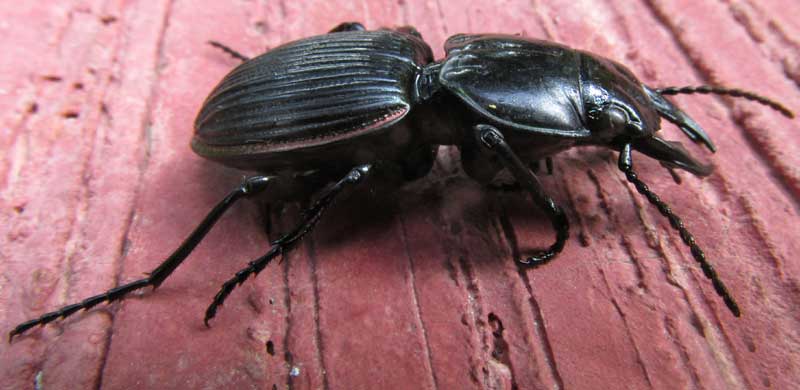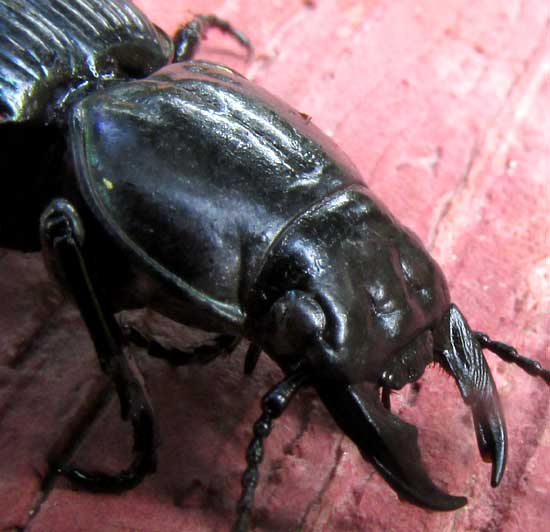Excerpts from Jim Conrad's
Naturalist Newsletter
from the June 19, 2016 Newsletter issued from Hacienda Chichen Resort beside Chichén Itzá Ruins; limestone bedrock; elevation ~39m (~128ft), N20.675°, W88.569°; central Yucatán state, MÉXICO
GROUND BEETLE
My friend Iolanda brought me a paper cup in which she'd deposited a black beetle about 1¼ inches long (3cm), which she'd found wandering on a bathroom floor. Below, you can see the critter with its mean looking "pincers":

A close-up of the head and its pincers, or "jaws," is shown below:

Of course these pictures went straight off to volunteer bug identifier Bea in Ontario, along with my remarks that it might be a tough job to figure this one out, since there's a blue million such beetles and their taxonomy hasn't been well studied.
Still, before long Bea replied that it was a kind of ground beetle, meaning that it was a member of the big Ground Beetle Family, the carabidae. She tended to think it was a member of the genus Pasimachus, and even thought it might be PASIMACHUS CARDIODERUS, known to occur in Mexico, Belize, Guatemala and El Salvador.
All species of Pasimachus ground beetles are wingless, and therefore flightless. In typical beetles the hard, shiny covering of the beetle's back part, its abdomen, is split down the middle, lengthwise. The two hard, shell-like halves, called "elytra," are actually front wings that have evolved to form protective structures over the back wings. When the beetle wants to fly, the elytra separate to expose the delicate hind wings stored beneath them, the hind wings deploy, and the beetle flies away. In the Ground Beetle Family, the elytra are fused into a single rigid shell. Most ground beetles run about under or on leaf litter in forests, their main prey being caterpillars and other larval insects.
Pasimachus cordioderus, which Bea thinks this could be, is nocturnal, hiding during the day beneath whatever it can find. And now we know that sometimes the species might wander into a tropical bathroom.